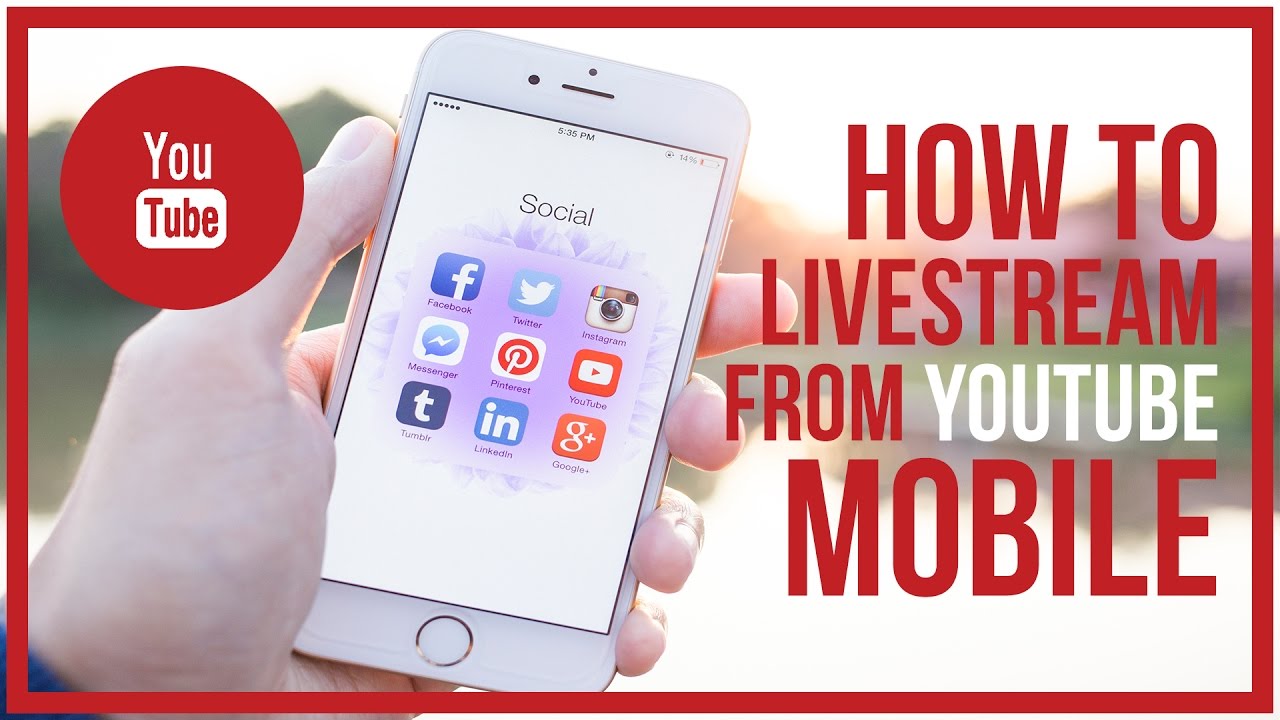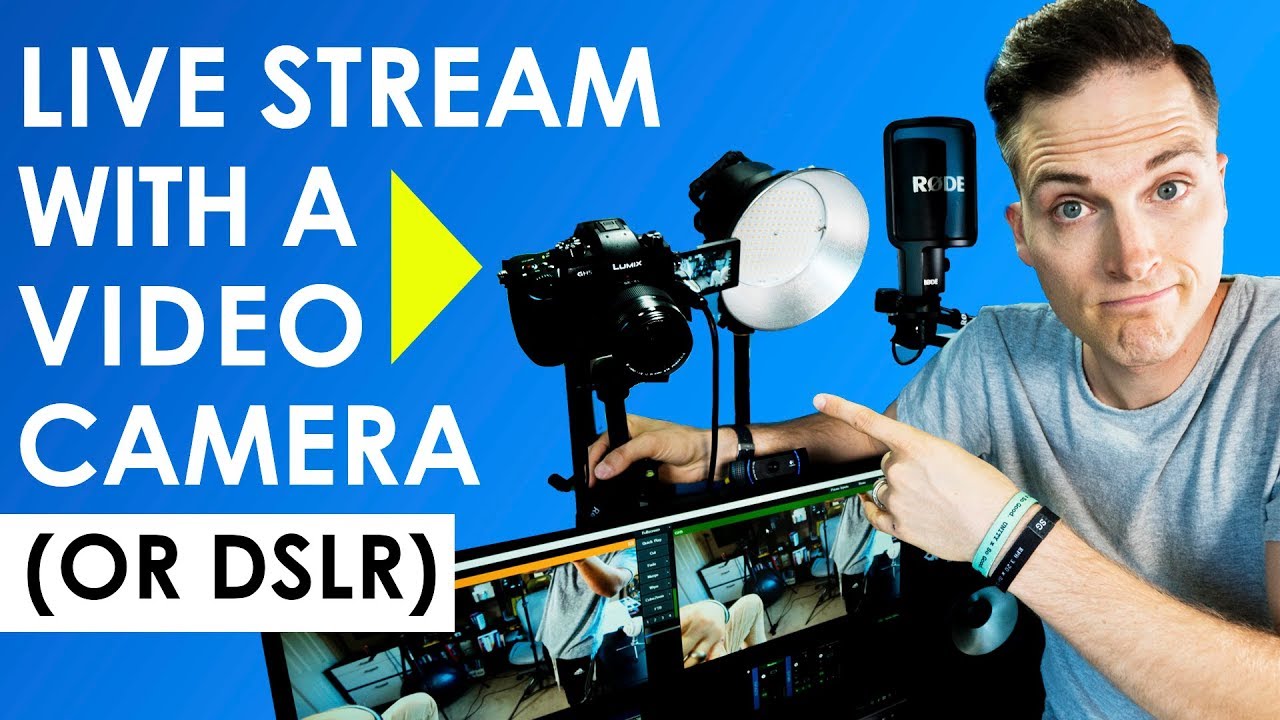Confused About Your Mobile Marketing Results? This Platform Tells you Which is Which!
Are you running mobile marketing campaigns? Are you confused about your mobile marketing results?
Dear marketer, there is a solution to your problems!

AppsFlyer is a mobile attribution & marketing analytics platform, helping app marketers around the world make better decisions.
Here is what you can measure with AppsFlyer:
- In-App events
- ROI
- Email campaigns
- CPI
- TV campaigns
- Lifetime value
- Social ads
- QR Codes
- CPA
The companies using AppsFlyer are in the following industries:
- Gaming
- Ecommerce and retail
- Travel
- Agencies
AppsFlyer Won the Hottest Marketing/Adtech Startup at The Europas Awards 2018
The Europas Awards is the European Tech Startup Awards honouring the hottest startups, unicorns founders, investors and blockchain projects in the European ecosystem, in partnership with TechCrunch.
AppsFlyer was voted the winner of the Marketing/Adtech Startup category which means the platform is now “Europe’s leading platform for mobile attribution & marketing analytics” according to TechCrunch.
Mission
AppsFlyer has emerged as the mobile measurement industry standard because it empowers advertisers with unbiased and transparent attribution analytics. Most importantly, we value the integrity of maintaining our clients’ data private and secure, which has earned the trust of more than 4000 network and analytics partners who have integrated with us. Rest assured, we will never sell data to any third-party platforms.
AppsFlyer team
AppsFlyer by numbers
- The platform was co-founded by Oren Kaniel and Reshef Mann in 2011;
- It has 15 offices around the world and this number is growing;
- It partnered with 4000 companies;
- Raised over $84M from top VCs to date;
- Has surpassed $100M in annual recurring revenue in the third quarter of 2018 – growing 100 per cent every 12 months, according to mobilemarketingmagazine.com;
- Is now found on 7bn mobile devices;
- It blocked an estimated $6.5M a day of ad fraud for his clients using its anti-fraud solutions.
Here are the main features and insights AppsFlyer provides through its platform:
- mobile attribution;
- mobile app marketing analytics;
- connection with an ecosystem;
- data integrity.
Let’s dive in and discover how each feature can help you measure your results!
1. Mobile attribution
- User acquisition attribution
Attribute every app install to the marketing campaign and media source that drove it. Granular dashboards report which network or channel, ad type, ad group, and ad creative drove each user.
- OneLink™ Universal Deep Linking
OneLink™ Universal Deep Linking attributes leads from any marketing activity, improves your conversion rates and boosts your customer experience across every platform and environment.
- Integrated Partners
Deep integrations with nearly every media source and marketing platform including Facebook, Google, and Twitter which makes it easy to attribute every install to its source.
- TV Attribution
Real-time TV attribution solution which measures the impact of your TV campaigns.
- Multi-touch Attribution
Users will often interact with multiple ads before making the final decision to install. This feature allows you to gain vital early funnel insights by knowing which media sources “assisted” each install – via a click or a view – as well as which drove the final install.
- Retargeting Attribution
Easily discover which campaigns drive the strongest user re-engagement and reactivation, in addition to the added value (ROI) these efforts bring to your app.
- Validation Rules
Take control and enforce your IOs. Limit attribution per media source or campaign to your defined targeting, saving time and money.
- Web Attribution
Seamlessly connect your web activity with your AppsFlyer data to measure, personalize and optimize your omnichannel journey.
- IO Builder – Fraud Appendix
Add a fraud appendix to you IO using this simple, free wizard. Protect your media spend and your time, by setting your terms before you go live.
2. Mobile App Marketing Analytics
- Impressions and cost reporting;
- Omni-channel measurement;
- LTV reporting;
- ROI reporting;
- Rich in-app events;
- Ad revenue attribution;
- Uninstall attribution.
3. Connection with an ecosystem
- Media sources
Measure your performance across every media provider in the world.
- Analytics platform
Integrated analytics platforms include Adobe Marketing Cloud, IBM, Swrve, MixPanel, Localytics and more.
- Retargeting
Sync your rich-in app events with retargeting networks to target specific users.
- Marketing automation
AppsFlyer’s deep integrations with mobile marketing automation providers allow marketers to easily use their attribution data to segment and target their push and in-app messaging, email marketing, personalization, user flow management, A/B testing and more.
- Agency integrations
Manage all of your partner agencies using dozens of agency integrations including local boutique agencies, specialty shops and nearly every major global agency.
- Agency transparency
Get full insights into any agency’s media spend and performance data right in your AppsFlyer dashboard.
4. Data integrity
Transparency isn’t just a buzzword, it’s how we do business.
Here are the platform’s features which ensure data integrity and protection:
Transparency to the core
- The AppsFlyer team has made the platform’s internal Pingdom overview reports accessible to the public;
- They offer both advertiser and agency level accounts – so that agencies can be as transparent as they want to be;
- They also offer full Raw Data Reports covering everything from attribution and performance data to postbacks.
Independent and unbiased
- No interest in the success of any ad network or affiliate network;
- Doesn’t offer any paid products for ad or affiliate networks;
- They have no financial relationships with any ad networks or affiliate networks.
Protect 360
- Unique, scale enabled data-driven protection from the most advanced types of fraud, including device farms and DeviceID Reset Fraud;
- Protects every element of your mobile business, from your user acquisition budgets to your omnichannel data integrity, time and budget allocation.
Here are some of AppsFlyer’s customers:
Alibababa, Walmart, Trivago, HBO, Coca-Cola, Adidas, Waze, Tinder and more.
Other advantages and benefits of working with AppsFlyer
AppsFlyer is An official Facebook Mobile Measurement Partner
AppsFlyer is an official Facebook Mobile Measurement Partner and is deeply integrated with Google, Twitter, Pinterest, Tencent Social Ads, Snapchat and others.
Pivot
Pivot is an integrated, fully customizable pivot table solution for mobile marketers. Easily save, share and collaborate. No need to use offline spreadsheets or to wait for data scientists ever again.
Audience segmentation solution
AppsFlyer’s Audiences is built on deep, API-level integrations. This is the only audience segmentation solution that requires no manual field mapping or CSV downloads and uploads.
Facebook and Google Adwords Exclusive ROI feature
AppsFlyer delivers real-time, fully automated ROI reporting across over 75 media sources, including Facebook and Google AdWords, so you can optimize your campaigns based on the real value their installs deliver.
How much time people spend connected to their smart devices?
How much time people spend connected to their smart devices?
The short answer is all the time!
But what all the time means exactly?
Let’s dig in a little deeper!
The 2018 Digital Future in Focus report from ComScore shows very interesting statistics related to our smart devices usage and consumption.
The report investigated 13 countries: USA, Canada, France, Germany, Italy, Spain, UK, Argentina, Brazil, Mexico, India, Indonesia and Malaysia.
Here are our main takeaways:
1.average time spent on connected smart devices: 4 hours
2. multi-platformers (mobile, desktop/laptop, tablet) remain a majority in most markets (46%), mobile only usage is 30% and desktop only – 24%; the countries that stand out is India (80% are multi-platformers) and France (60% desktop users)
3. multi-platformers consumption is still the norm, but mobile only is on the rise
4. mobile users consume more than twice minutes compared to desktop users (e.g.: Argentina 7000 minutes, Canada 2000 minutes)
5. entertainment and video flourish on mobile platforms

6. smartphone takes largest share of global digital minutes
7. here is the top 5 apps by reach

8. mobile apps account for over 80% of mobile time
9. mobile-only audiences are now second only to multi-platform users
10. Amazon sites are slowly surpassing Facebook and Google sites
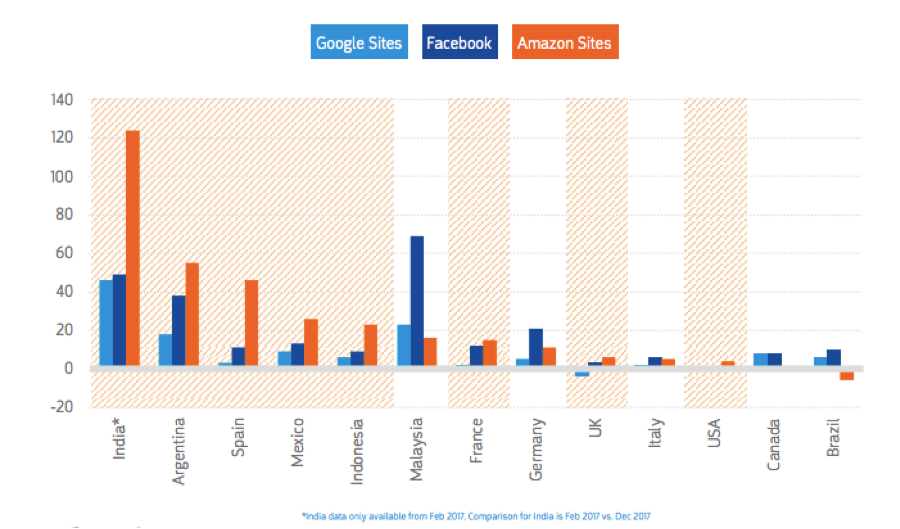
11. markets which have a mobile audience larger than its desktop audience: India, Indonesia, Mexico, Spain, Brazil, Italy and Malaysia
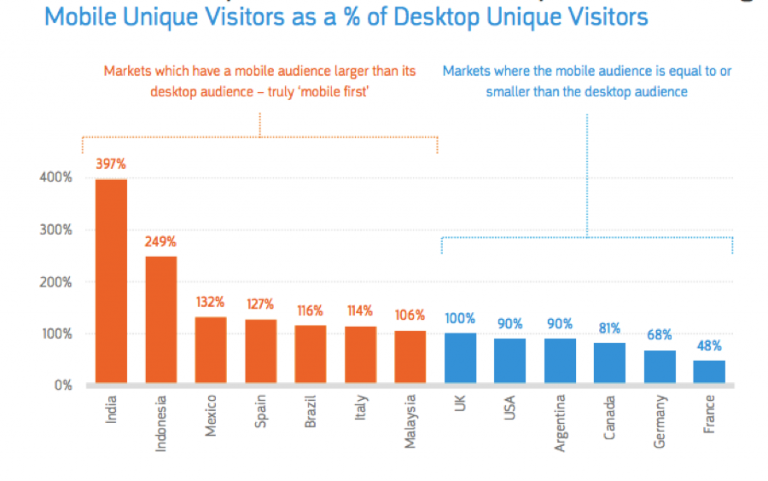
12. markets where the mobile audience is equal to or smaller than the desktop audience: UK, USA, Argentina, Canada, Germany and France
13. in the majority of markets, retail has higher proportional audience reach among mobile users than desktop, with Spain leading by 97,5%; at the other end of the spectrum, there are Germany, Italy and Malaysia where users access retail by desktop
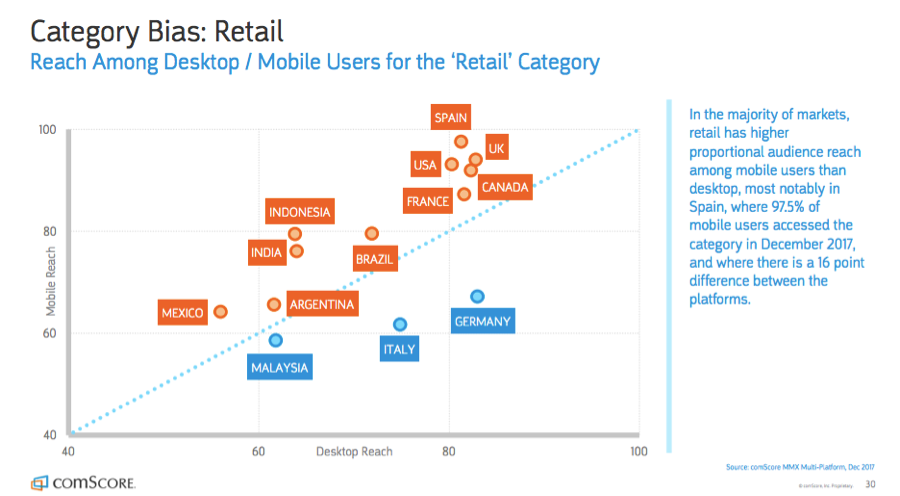
14. when it comes to news and information, 80% of users in all markets access this category by mobile, except Canada where 95% of users turn to desktop
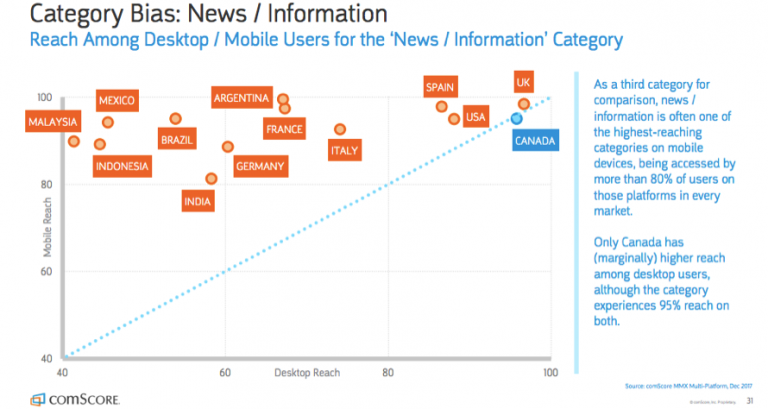
15. people use their app minutes for the following categories in this order: social media, entertainment, instant messaging and games
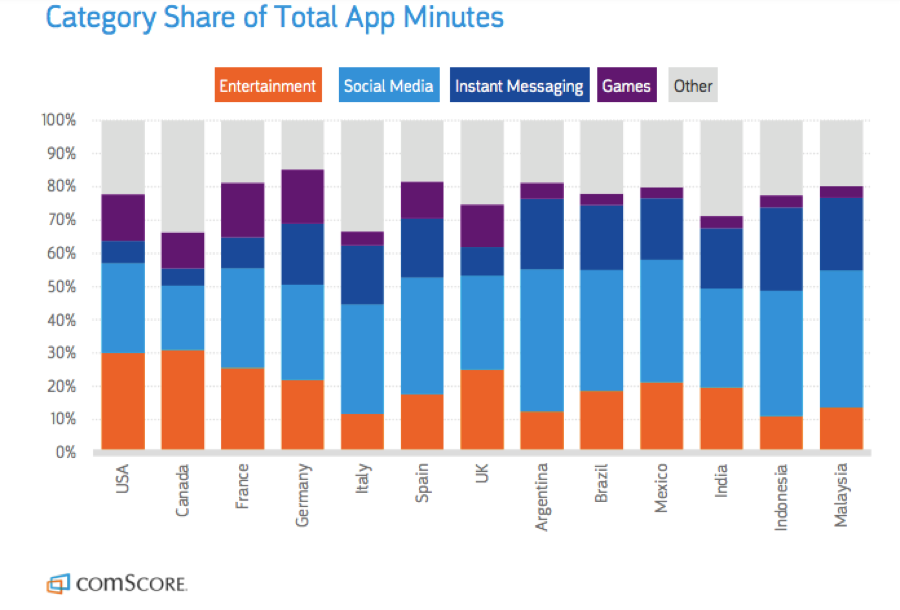
16. the most popular social network is Facebook by far, followed by Instagram, Snapchat and Twitter

17. most popular instant messaging app is WhatsApp Messenger, followed by Facebook Messenger and WeChat
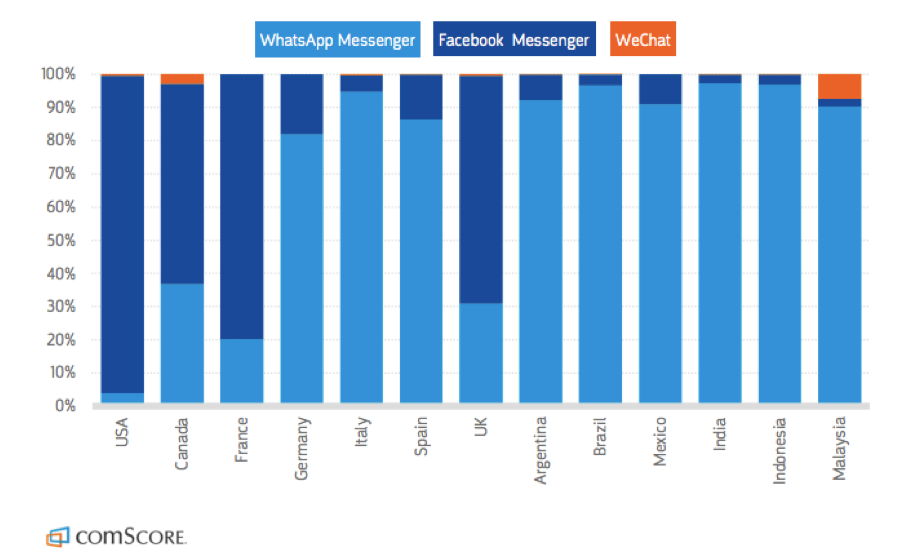
screenshots: comscore.com
The customer experience in B2B marketing
A research by SiriusDecisions found that for 80% of B2B buyers surveyed, customer experience counted as the top significant reason why they chose to work with a specific provider over another. This 80/20 correlation is not a surprising revelation, meaning that customer experience is critical for customer growth, retention and advocacy and could potentially make or a break a company’s success.
The bad news is that most B2B companies are failing to meet post-sale customer experience expectations. 45% of the B2B customers that SiriusDecisions talked to indicated that they aren’t getting the value they were promised. As a result, 42% indicated that they’re not sure about renewing with their vendor, while 61 % aren’t willing to recommend their providers. The study also shows a widening gap in terms of how executives and customers perceive the post-sale experience.
According to EY, it’s important to see that business-to-business (B2B) buyers are increasingly behaving like consumers — taking advantage of self-service digital channels to shape how they learn about and purchase products. This “consumerization” of B2B buying has made
customers increasingly elusive. To remain relevant, sales professionals can no longer carry on as they used to, they need to become just as digital as
their customers.
In this context, B2B marketers need to think about the end-to-end experience of customers. Companies need to pay particular attention to the post-sale experience—to make sure that they understand the wants, needs and pain points of the customers they serve.

Some of the main ideas we want to pinpoint for you from the EY study:
B2B buyers also have become more empowered. The advent of more transparent marketplaces and the proliferation of online content and digital communities, combined with social media, allow buyers to increasingly self-educate when evaluating their product and service options — and to make many of their purchases directly without ever dealing with a salesperson.
According to International Data Corporation (IDC), 50%—80% of
buyers’ decision-making processes are complete before a salesperson gets involved and 90% of decision makers say they never respond to cold outreach. In other words, B2B buying behavior is starting to look a lot more like that of B2C.
Buyers’ values and perspectives also are evolving as younger generations become a larger and more influential portion of the workforce.
It gets much more difficult for B2B companies to get customers’ attention and build relationships with them and create and sustain brand loyalty.
The important thing is to work out how we can get the same experience regardless of where customers interact with the companies and provide richer and richer experiences that add a lot of value as they go through the journey with us.
Identify leads and the right decision makers more effectively with social networking.
It’s important to put emphasize on leadership. According to a 2017 Edelman-LinkedIn report, 9 in 10 business decision-makers find thought leadership
important or critical to their decision process, while 82% said that thought leadership increased their trust in a vendor organization.
While B2B companies have made progress toward omni-channel sales, they still have a long way to go. According to one study, three-quarters of participating
B2B companies generated no more than 20% of their sales via e-commerce. Yet that’s likely to change in the near future, as a majority of respondents in that study expected their e-commerce sales to rise by over 5% in the next
12 months. (source: Interview conducted specifically for this whitepaper with Phil Lurie, SAP’s Vice President of Sales Technology.)
By shifting to a digital selling model, supported by a robust center of excellence, B2B companies can develop the tools, technologies and processes they need to create and develop stronger relationships with and relevance to customers in an
evolving digital world.
Moreover, according to a BCG research, here’s a new generation of B2B customers out there who do not expect, and in many cases do not want, to deal with a salesperson until it’s time to close the deal.
These new buyers look for the same digital experiences and features—including on their smartphones—that they encounter as consumers. Decision makers are increasingly supported by young, tech-savvy researchers, who commonly use mobile for work and multitask on more than one screen.
Top trends in shopper marketing in 2018
With a more and more savvy consumer and digital and technology re-shaping it, shopper marketing became in the last years almost a science, relying a lot on research and customer observation. While in the US, the Shopper Marketing magazine developed a very strong research on this year’s trends that can be read here, we asked 3 local advertising specialists to give us their thoughts as well.

Cristina Oncescu, Head of Strategy pastel
What do you believe will be the biggest shopper marketing trends of 2018?
I don’t know if they are the biggest, but they are certainly hot in 2018:
- Personalised shopping
There are many in-store technologies that can be used to provide a personalised shopping experience. NFC (Near Field Communication) chips, QR codes, iBeacons and Visual Light Communications are just some of the emerging technologies used. These, when linked to previous shopping histories via a loyalty app for instance, can provide disruptive yet compelling interactions with the shopper as they enter the store.
- Virtual assistance
From voice to chatbots, going through messenger apps, one-to-one communication is on the rise. Being available and being helpful, when the shopper needs you, is making the difference.
- Augmented Reality
The use of Augmented Reality on mobile devices provides an engaging way for marketers to reach their target audience – it’s quick, easy and very interactive. With the integration of AR on iPhones, it will be easier for marketers to engage larger audiences during their path to purchase.
What are they influenced by and why?
Technology, and especially mobile, led shoppers becoming more and more omnichannel. Now, this is an actual behaviour that the shoppers engage in (of course in a subconscious way). Web, mobile, social, apps – it’s all just shopping to consumers. The separation between retail channels is growing even more blurred by the day. Can they return online products in-store? Can they check if the store has their size and colour on their mobile phone before they leave their homes? Consumers expect a seamless experience across all channels.
What is pastel advising its clients this year?
Great content will always engage. Have an interesting, consistent story and a seamless experience throughout the whole omnichannel path to purchase.

Anton Gherca, Chief Innovation Officer at g7
What do you believe will be the biggest shopper marketing trends of 2018?
We believe that shopper marketing is an area of brand communication that has been kept largely untouched by the digital revolution that is reshaping the advertising industry for the past 10 years. So we expect that „digital BTL” will start gaining momentum, as today’s practices are deeply engrained in traditional approaches of point of sale communication. We think that we will see more connections between social media and shopper marketing, and geofencing and point of sale promotions, with the aim of delivering a more integrated omnichanel shopper experience.
What are they influenced by and why?
Like many things in advertising, the move towards a more „digital” shopper marketing approach is driven by the consumers themselves, or more precisely, by their lifestyle. As of 2017, the penetration rate of smartphones in Romania is 70%, while 41% of the population are already mobile social users. Peer-to-peer ridesharing like Uber makes people understand the benefits of the sharing economy, on-demand services like Netflix put them in the driver’s seat while the wide 4G coverage makes them want everything now. This means people are getting more and more accustomed to having everything at a push of a button and they expect higher levels of service, increased transparency, embedded interactivity and all in all a better customer experience out of everything.
I know this sounds like a bunch of buzzwords cramped togheter in one sentence, and our agency has never been in the „buzz” business, but the reality is that the shift in consumers’ lives is happening with or without us. I think the bottom line is that today’s shoppers are just expecting something more out of marketing communications. More relevance, more engagement, more customization. This doesn’t mean that we, the shopper marketers, can’t still get away with the old „buy one – get one” or „scratch this to win a prize that you don’t even want” mechanics. But wouldn’t that be a pity?
What is g7 advising its clients this year?
Our agency has embarked in a digital transformation journey and once set in motion, it can’t be stopped. We will continue an initiative started in 2017, of hosting periodic innovation workshops together with our clients for identifying the opportunities put forth by today’s technology, and see where that gets us. Still, there are a couple of areas we keep tightly in our focus: Proximity marketing, Loyalty management and Gamification. We work towards integrating in an organic manner these three capabilities in the approach our clients are already used to: honest creative work, deep understanding of shopper behavior and solid deployment in the retail ecosystem.
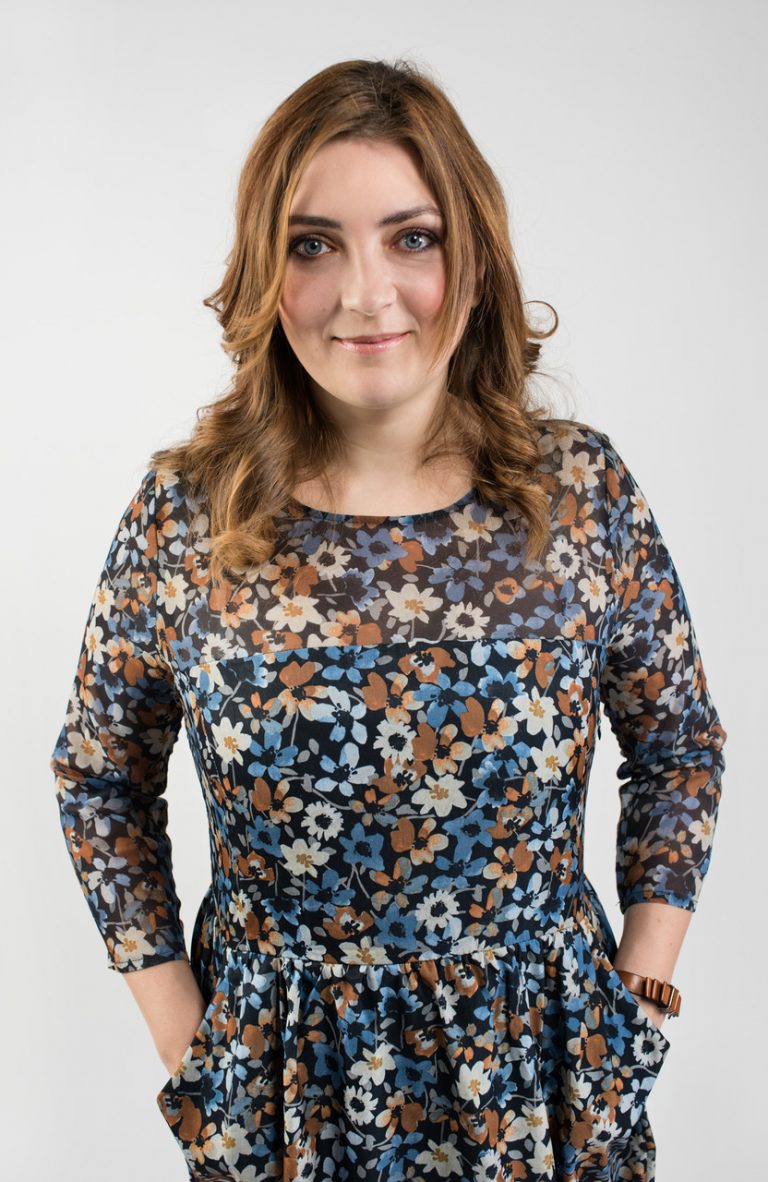
Ondina Olariu, Business Director Geometry Global
“Fragmentation, increased competition and e-commerce are key words for 2018 and beyond in our region. After seeing a huge expansion, somewhat even inflated for some of the retail players, we will witness a new battleground, named proximity. As global retailers keep expanding, we will live through a great variety of formats, more flexibility and adaptation to micro-retailing needs. Proximity will be influenced as well by the increasing degree of urbanization, as well as the new generations of shoppers, more dynamic, digital savvy and format switchers (in Romania, 25 cities cover 31.3% of total population and 55.6% of urban population – source: INS, Romania, 2017).
And when we say flexibility and adaptation, think beyond format, as we see discounters aggressively stepping in the services territory, while share of consumer spend reached 68% in services vs 32% in goods in 2016 (source: Kantar Global Trends 2018). Goods subscription – meaning bundle goods as a service is something that we preached our clients for a couple of years already and it’s approaching it’s turning point in 2018.
E-commerce in Europe is predicted to reach 10% of total retail (source: Kantar 2018 Global Predictions, WPP Data), with a clear future towards what we call omni-channel, especially since gen Z takes the scene as newest shoppers. At global level we see the switch and struggle of most pure e-commerce players in becoming physical as well, to the level where blogs impersonate the physical space in temporary shops where experience blends with sales, while in Europe we are taking steps into developing the brick-and-mortar into e-commerce, especially for FMCG area, which are the most shopped for categories. Retailers will continue or start monetizing opportunities through their own apps, following the evolution of more mature markets, such as Spain (+210% in app sessions growth in the last 2 years) or Germany (+130%). Here again, it seems that pure digital players have a degree of advancement, since digital-first retail apps saw more that 2x the average sessions / user each month and saw stronger growth in the last 2 years. (source: App Annie 2017 retrospective report). This means we will see accelerated growth for digital players apps, as the new arrivals from physical retailers will need to extract good lessons and apply on fast track.
Blending online and offline expresses also in automation, such as automated cashiers. As retailers will increasingly see value, watch for a retail unemployment crisis, especially in more mature markets. The proliferation of private labels will increasingly force out brands from the physical shelf. Most of these private labels continue to be supported as brands rather than price options, from food to fashion (see Esmara for Lidl and Tex for Carrefour) and home appliances (eg Carrefour Home consumer electronics). Health and Wellness is an increasingly appealing theme, for both brands and retailers. Watch the shelf space growth in store, as well as the latest positioning of certain private labels, trying to capture value and exploit the trend.
As a shopper agency, we are not only advising but already working with our clients on the omni-channel shopper journey models, including retailer strategies and new channels opportunities in this process. We build with them strong e-commerce fundamentals for the Romanian market and expand to e-commerce experiences and integration of channels for more mature markets. We operate with an increasingly complex model that includes data management and A/B testing applied to shopper initiatives and integrate thorough shopper knowledge in every solution we bring to the table. Bonus: an emerging trend, still less visible to this market is the return to D2C (Direct to Consumer). It will be highly influenced by retailers’ behavior, however, more brands become conscious they cannot rely exclusively on retailers and distributors in building their relationship with shoppers and consumers, therefore they’ll be trying to find ways to cut it short to them and bypass the “official” channels.”
How and why to create a YouTube live stream
The power of the video is increasing more and more everyday, on all platforms, from SnapChat to Instagram, from Facebook to YouTube. But what it gets the biggest attention in almost all of them is the live streaming,that brings people together instantly,helping them bond more on the things they like and have in common.
If the live streaming on Facebook is hugely popular, not the same it can be said about the live streaming on YouTube.
“Facebook knows that it needs to grow scalable live video channels to attract audiences, and YouTube content creators are the natural partners to help achieve this vision. In a world of digital plenty, live streaming offers the rare opportunity for digital exclusivity, which cannot be replicated elsewhere. YouTube’s huge dependency on native content creators (60% of the most subscribed YouTube channels are in this category), means that they have to respond aggressively and a monetizable live feed is one clear way to achieve this and retain their indigenous social talent,” wrote Tom Mulligan on Linkedin, here.
“While live streaming has been part of YouTube since 2011, the consumer appetite for the technology has only taken off in the last 12 months largely pushed by Facebook aggressively promoting live video, initially through the 50 deals signed with media outlets and celebrities to produce live video content (Facebook’s first example of commissioning video content). The success of this controlled experiment led to the roll-out to the general public later on in 2016, with the result that live video now holds Facebook audiences for three times longer than recorded video,” wrote http://www.hypebot.com.
Top 5 Video Editing Trends in 2017
1.Having a video strategy is a must
Every campaign and business must have a strategy behind them in order to succeed. The time of improvisation has passed, letting its place to creativity and smart thinking, with a strong business and strategic insight. Almost 73% of video marketers admit that videos help them getting the best ROI, but 29% also admit that the lack of an effective strategy is the main reason why they don’t see bigger returns.
When it comes to video editing, a well-planned video strategy is becoming especially important and will soon become commonplace. The audience is smart and demands the same from companies and brands and, at the same time, doesn’t settle for less anymore. Moreover, the targets are getting extremely knowledgeable and know how to differentiate between a randomly edited and thought out video.
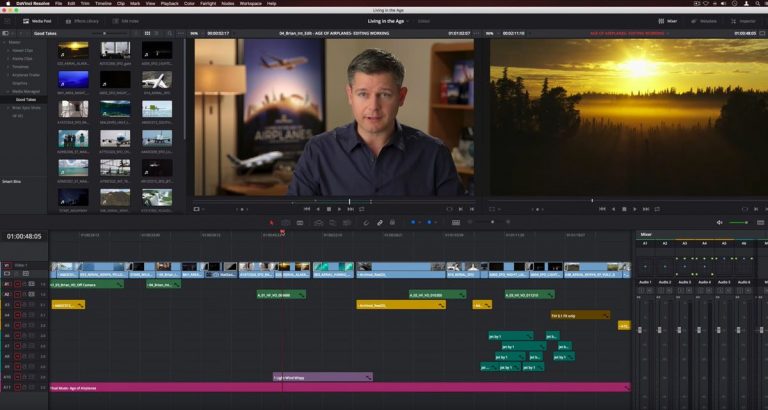
2. Video Chapterization is totally necessary
The attention span of the target audience, whatever field you may be in, has drastically reduced. Faced with a wealth of information on social media and video sharing channels, very few people are willing to sit through an entire video. Video Chapterization is a boon for video editors and creators by allowing the users to skip through the video chapter-wise to get to the relevant content faster. YouTube already allows uploaders to add chapters to their videos and is an upcoming video editing trend which will see widespread adoption in the coming years.
3. Professional Video Editing Software Will Go Mobile
This trend has already caught on when it comes to high-quality photo editing software such as Adobe Photoshop, Adobe Lightroom, etc., making their smartphone debut 2 years back. In 2017, we can expect to see high-quality video editing software release versions of their mobile apps to facilitate ease-of-use and seamless mobility.
4. Live Video Editing Becomes the Big Thing
The rise of live video on Facebook, Twitter, YouTube, Instagram, was one of the latest video editing trends in 2016. In 2017, as the technology catches more place and establishes itself, live video editing should become a norm across all these platforms.
5. Edited Virtual Reality Videos, integrating with Social Media Platforms
2016 saw YouTube gain a string of competitors in the form of Instagram, Facebook, Twitter, etc. as all these platforms started making video a bigger part of their overall user experience. Video editors have now the opportunity to choose from a variety of channels found at their disposal and also publish on them. But what is more interested and suggested by the specialists is an upcoming trend which can help: VR videos integration onto these platforms.
Facebook is already developing Sorround360, a high-quality and cutting-edge VR camera which would facilitate the production, editing, and publishing for VR video content on different social media channels. “This black circular camera—with its 17 evenly spaced lenses—looks kinda like the flying droid that descends onto the ice planet at the beginning of The Empire Strikes Back (though it lacks those insect-like dangly legs). Drawing images from all 17 of those lenses, it produces 360-degree spherical video for viewing both inside virtual reality headsets like the Samsung Gear (stereoscopic 3D) and on ordinary smartphones, tablets, and PCs (monoscopic). Similar videos are already popping up in News Feeds on the Facebook social network,” wrote Wired.
How has the rise of technology changed the advertising?
As anything that had touched or been in contact with, the rise of the technology changed or at least had a great impact on. From the launch of the e-mail, the boom of the Internet and social media, to the new channels that arrived and are changing everyday, technology plays an enormous role in our business lives. A role that deserves to be acknowledged and appreciated.
Looking to use technology disruption to your advantage? Join our masterclass!

Some of the most important ways in which technology has changed and impacted the advertising scene are:
1.The video and content video popularity
If 10-20 years ago it was all about the TV, with the internet and the rise of platforms like YouTube, Facebook, SnapChat , video advertising has become increasingly widespread and its content’s importance grew along with it. As people become accustomed to watching videos, static images such as traditional billboards can seem dull by comparison. People are also getting savvier and savvier and how what to expect and ask from the advertising they receive. Therefore, they are not waiting anymore, they are reacting, creating their own media and interacting with the existing one in new, innovative ways.
2. Video blogging
It is not even about blogging anymore, but about video blogging and video bloggers taking control of the social media and its endless opportunities offered. The speed with which the new, extremely performant smartphones, tablets, notebooks are launched helps the content and video creators be even better, faster and smarter in their communication. The advertising campaigns are involving them more and more and making them part of the whole 360 communication, even stars for some of their campaigns targeting a younger audience. Therefore, instead of being only a one dimensional flow of communication, the latest campaigns are showing all kinds of new smart and innovative approaches.
“For a time, the digital age meant that free advertising was everywhere. Social media channels, pioneered by Facebook, have brought back the idea of paying to play. In other words, you have to dedicate a small budget to reaching people via social media.(…) The digital age has heralded an era where everyone can join the advertising dogfight. Yes, those with huge budgets still have an advantage, but it’s no longer the decisive advantage of before. Even the smallest companies have good reason to play,” wrote AJ Agrawal for Forbes.com.
3. The rise of some is the demise of others
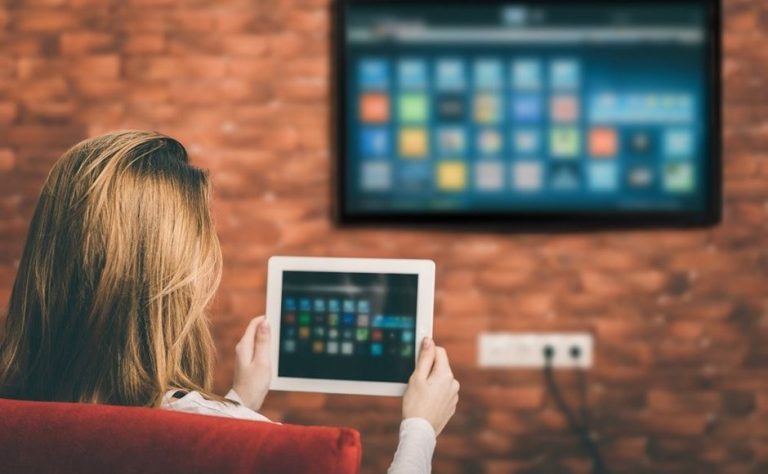
Along with the rise of digital and mobile, channels such as print media and radio are decreasing in their audience and reach, being forced to thing outside-the-box and find new ways to keep them from disappearing. Even TV is not the king anymore in some parts of the world, where the digital investments are conquering the top spot.
4. Message personalization and new targeting tools
Nowadays, every client and consumer wants and demands to be touched by the advertising campaign, to feel like the messages are personalized for him / her, that they are addressing him/ her and him/ her problem and desire particularly. Something that due to the new technologies and the digital growth is becoming more and more possible.
Behavioral profiling has gone viral across the internet, enabling firms to reach users with specific messages based on their location, interests, browsing history and demographic group. “Ads can now follow users from site to site: a customer who looks online for flights to Frankfurt will be inundated with German holiday offers. Conversant, a digital-marketing firm, uses an algorithm to deliver around 800,000 variations of an ad to its big clients’ prospective customers to make it as irresistible as possible. Kraft, a food company, monitors online opinions on its brands in an office which it calls <<the looking glass>>,” wrote Business Insider.
Moreover, in the classic advertising model, firms used to place ads with media that brought together the audiences they were after. They would go for business executives in the Wall Street Journal, for example, or youngsters on MTV. But now advertisers no longer have to rely on media as proxies for consumers, because they have more tools and data to target precisely the people they want to reach.
5. Programmatic is the new KING
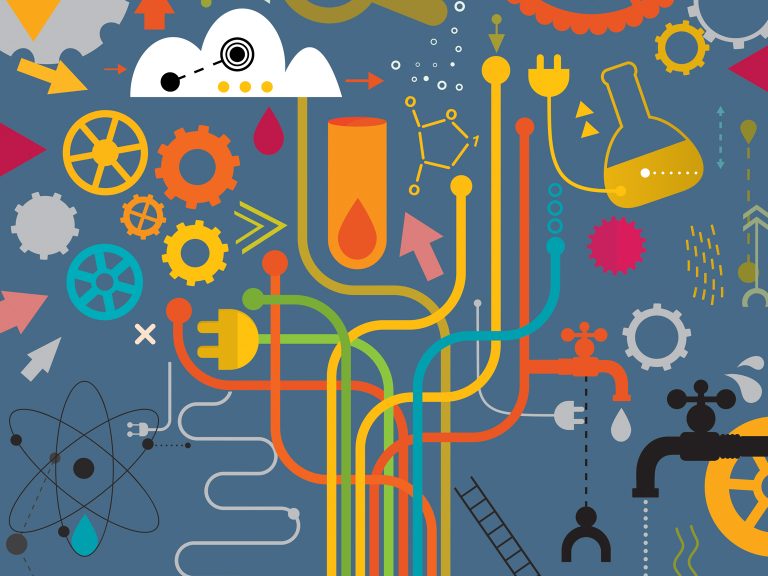
Programmatic buying represents a new system for targeting consumers precisely and swiftly with online adverts or DOOH. Publishers, advertisers and intermediaries can now bid for digital ads electronically and direct them to specific consumers as fast as they want to. Programmatic media buying allows the “owner/brand” to tailor a specific message and creative to the right person, at the right time in the right context – using audience insight from the brand (the customers you want to target) around the kind of audience they want to target. This methodology should deliver far more precision and personalization of messaging and media, resulting in more efficiently targeted campaigns, and less of the “spray and pray” methodology of digital advertising – which is less targeted and based on sheer volume (mainly of impressions).
More on the subject one can read here.
Best Marketing Ideas in 2017
Finding inspiration is something a marketer and creator should always be interested in. We have some ideas that might give you a push to try something new and help your brand even more.
Paid marketing on untapped channels
Differentiation is key and clients need to understand that using only Facebook and Google for promoting themselves, even they bring huge volumes, is not enough anymore for achieving success. In an ever changing market, being among the first to tap into less used platforms and discover the ones that have the biggest change to rise (Snapchat, Instagram) is what brands’ representatives should do.
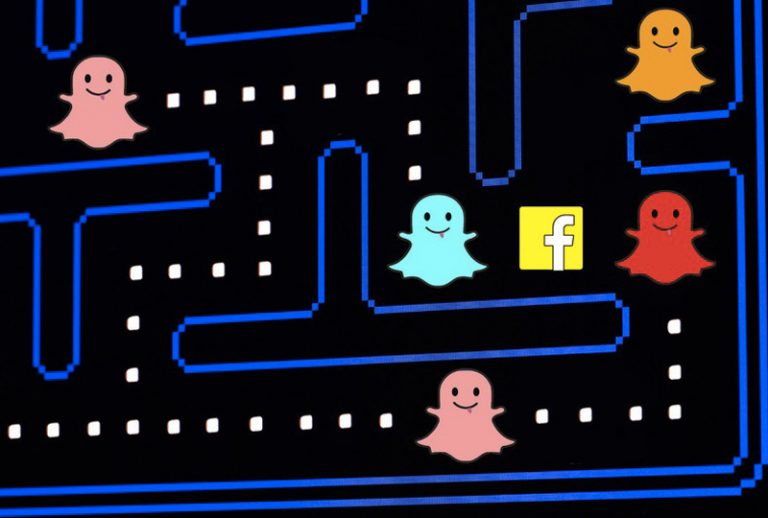
photo: wearevillage.com
Advertising is most successful when there is market inefficiency.
Choosing to communicate smartly on a channel that isn’t very used or not put to its true value, may be the key to success. Moreover, the advantages occur on channels where there’s a lot of volume, but less competition or no competition.
Content Multiplier Marketing and cross promotion
It’s the time of the multi-channel communication, instead of using just one or two channels. Finding the perfect mix for the brand is a very important step to take. The content is one of the most important aspects these days and can take the brand in the direction you want it to. At the same time, the content can be produced in several ways of expression (articles, videos, audio recordings, a blog post) and by using different shapes and channels it will help the brand increase its awareness.
Moreover, it’s really important for the brand’s target to be able to find the content on several mediums and see its versatility. Also, it’s another manner of gaining new fans that love different types of content.
Create content that’s easy to replicate.
Making a smart and easy content can also help the fans create their own twist on it, share it and show their personality along. Who doesn’t want a target involved in the brand’s growth?

Go mobile
More than ever it’s the mobile phones’ time. Most of the people are using Facebook on the mobile phone instead of the desktop or the tablet, as well as checking and answering their emails and other important conversations and messages. Therefore, the brands’ messages must the adapted to the medium, in order to create the best user experience possible.
Appeal to visual strategies
People understand better the messages and feel more connected to the visual side of the stories. By using video recordings and live-streaming, the brands are growing faster than ever. Recently live-streaming has taken the social media world by storm, Facebook reporting last year that 100 million hours per day of video are watched on their site. Therefore, the marketers should engage their audience with live-streaming at events or conferences that highlight them and their product. It’s a quick and effective way to connect with customers and build the brand.
Visual marketing effectiveness will also rely on engaging graphics. While graphic design has always been important, it will need more attention this year. Viewer engagement durations are shorter and social feeds are getting more crowded. Stand out with powerful graphic content.
Create an expertize blog
Making sure to optimize the brand’s website for search engines and mobile, with quality blog posts, we’ll have as a result the business’ appearance at the top of search results for topics related to your service offering. The result will be definitely a larger number of visitors accessing the website, an increase in leads, etc. The effectiveness of the blogging will be based on exciting and informative content, therefore hiring an expert in your industry or scheduling your own time to draft a quality post each month might be exactly what the doctor ordered.
The best media mix for your brand in 2017
The media market is changing under our eyes, each year bringing something new. It’s more than obvious that, even if you are representing a smaller brand, it’s not enough to rely on a website or social media page alone if you want to be competitive in the marketplace. Moreover, the media channels that used to work very good for you two or three years ago may very well not be the best ones to use anymore.
According to Initiative and their report Media Fact Book 2016, in Romania the TV continued to be in 2015 the rising engine of the media market, having a push of volumes of 7 percent compared to 2014 and reaching the EUR 212 million margin. Other channels that grew were the online (a boost of 12 percent and reaching EUR 57 million) and the radio (a 5 percent boost, until EUR 19 million). The OOH remained stable at EUR 28 million. Moreover, Initiative estimated that the media market would reach in 2016 EUR 351 million this year, following a 6 percent growth. The evolution on each channel is similar to the one in 2015 – the TV market will grow with 6 percent, the online with 12, the radio with 5, while the OOH will remain the same and the print would continue to drop still with 10 percent. In this context, the approaching of the digital next to the TV in the consumers’ preferences are, the amplitude that the mobile took, the influence of the multi-screening or the forever bigger importance of the content’s quality has over the rise of the media budgets.

source: Linkedin
With a well-chosen media mix, you can build the kind of name recognition and buzz for your company that isn’t possible with single-pronged approach. A mixture of owned, paid and earned media will help ensure your marketing efforts are reaching your target audience.
Consumers want brands that are useful and accessible, and most of all, entertaining. Marketers will continue to pull out all the stops to counter declining ad receptivity. In 2017, we’ll see more branded content and less regular advertising. Get ready for more native content, short and long form video, branded filters, and emoji and PR stunts. But it won’t end here. The specialists forsee that the marketers will forge ahead with new technologies such as 360 video, augmented reality, virtual reality and artificial intelligence (chatbots performing customer service and sales functions), making the landscape ripe for new creativity. Marketers will also closely monitor effectiveness as studies start to show which formats consumers find annoying and intrusive, particularly on mobile.
These advancements create new challenges for marketers. Far from a controlled consumer view of a brand (TV, outdoor, instore), marketers will face multiplatform, multi-device, in and out of walled gardens, all differently experienced by every consumer. Geotargeting will be seen as a commercial opportunity and Snapchat itself is using geofilters to let people know where to find a Snapbot vending booth. Brands will move quickly into customized/personalized creative content, delivered in a targeted way via programmatic buying. We will see more sequential content as marketers consider using retargeting for a more strategic and persuasive catenation of consumer messages.
In a media landscape of ongoing dramatic change, advertisers will more aggressively adopt multiple media alternatives to reach and connect with their audiences throughout 2017. Synergies will become more important than any single channel and the collective weight of all channels put together. Marketers will be focused on understanding the role each media plays within a broader plan and how they rub off to produce synergistic effects. The concept of synergies has been around for some time but what has changed is the planning aspect and the application of a discipline to the selection of channels to maximize its impact. Cross media studies conducted by Kantar Millward Brown show that globally 25% of media effectiveness has been attributed to synergies, and nearly 40% in APAC. These numbers are not only growing but increasingly we are seeing non-TV synergies emerging as advertisers and agencies start to get their heads around this. The two broad parameters needed to leverage synergies are – creative synchronization and media duplication and phasing.

source: Digital Land
„A “big idea” is important for creative synchronization to occur, but it’s also about adapting the message to the medium and following a common theme across a campaign. For example, it’s unlikely that a 30 second TV ad will work as well on YouTube or Facebook because these media have different characteristics. But they offer opportunities for forming different kinds of relationships that meet consumer needs at different times and occasions. Optimising media duplication and phasing can go a long way in driving synergies but as a first step, marketers will need to ensure that every medium has a role to play within the broader media mix. Roles will be in terms of driving ‘reach and or frequency’ or various aspects of how people think, feel and make decisions about the brand,” said Straford Rodrigues, Media & Digital Director, APAC at Kantar Millward Brown.
Therefore, every brand needs to create its media plan accordingly to its target, expectations and business plan. The strategy is more important than ever: setting clear objectives, finding the right opportunities, integrating your message and your true content, exploring, creating, producing and measuring.
Apart from the media planning itself, don’t forget the fact that the content is the KING and it needs to be as powerful, sincere and creative as possible.
Top Marketing Techniques in 2017
Smart Insights recently started a research asking its readers to give their opinion on the most important trends in 2017, asking them to choose the most important marketing activity that they think will give their business the biggest incremental uplift in leads and sales in 2017. After receiving 2,352 responses from marketers around the world, the results were:
- Big Data (including market and customer insight and predictive analytics)
- Content marketing Communities (Branded niche or vertical communities)
- Conversion rate optimisation (CRO)/ improving website experiences
- Display(Banners on publishers, ad networks social media including retargeting and programmatic)
- Internet of Things (IoT) marketing applications
- Marketing Automation(incl CRM, behavioural Email marketing and web personalisation)
- Mobile marketing (Mobile advertising, site development and apps)
- Paid search marketing, e.g. Google AdWords Pay Per Click
- Online PR (including influencer outreach)
- Partnerships (including affiliate and co-marketing
- Search Engine Optimisation (SEO or organic search)
- Social media marketing (including Social CRM and Social Customer Care)
- Wearables (e.g. Apple Watch, activity trackers, augmented reality)
More information on the report can be read here.

You can find out more here.
Best Apps for Productivity in 2017
Every day we are bombarded by tons of emails, information and social media that is really hard to keep track of what is truly essential or not. Moreover, they are eating up a lot of precious work time, preventing one from being as productive as it could be and leaving the office at the right hour. Therefore, taking all this context in consideration, all the major app and technology providers are constantly looking for ways of improving the productivity and helping you have a proper balance work-life. We selected some of the most interesting and useful apps and extensions out there on the market, that are ready to help you achieve the productivity goal.
This browser extension measures your time. Being successful means being brutally honest with how you spend your time. You can set a timer for each activity you do and label what you are doing. At the end of the day, you can check how long you spend on each activity and adjust from there. It also syncs in with other productivity apps like Asana. Harvest’s powerful reporting gives you real-time access to keep your projects on time and on budget. Get the insight you need to estimate future projects, and ensure your business’s profitability.
Workflow lets you customize your phone so that you can skip time-wasting tasks. By telling your phone what to do when it notices a certain action, you can instruct your phone to call a taxi before your next calendar appointment, upload your latest photo to Instagram, and any other string of actions you can think of. You can build your own workflows with a simple drag-and-drop interface. Mix & match hundreds of actions to create quick shortcuts, manage your media, share content, and much more.
Under the headline, “Remember everything”, Evernote is an online collection of everything you want to remember. It’s like a digital notebook that stores photos, web pages, notes, PDF files, audio clips, and to-do lists. Once you add things to your notebook they’re completely searchable and can be accessed on your desktop, the Web, or your mobile device.

It allows you write and store documents, sketches, memos, pictures, and more online through the cloud. You can access it on your phone or on a computer. It proves to be very useful, especially when you have long materials or analysis to write, as you can start on your phone and continue the work at your laptop or desktop and vice-versa.
Moreover, Evernote makes sure the notes you’ve saved are easy to find. You can even search for handwritten words buried deep within your notes.
Slack is a great way for keeping in touch with your team at work without sifting through dozens of emails. You can tag users and create multiple channels for smaller team projects. The desktop client sends nonintrusive desktop notifications to the corner of your screen, allowing you to stay on top of what’s happening while keeping your eyes on your work.
When you are loaded with emails and you need order, Slack solves this by being something in between email and instant message. Messages and files sent to a group of people or a single person are neatly organized and clear as day.
On top of that, there are customizations you can add to make it your own. You can have it alert your phone with the app or pull up a GIF if you’re feeling funny.
If you want clear and easy, Clear is one of the simplest ways to keep track of what you need to do. You can easily drag and reorder your to-dos, and adding a new item is as easy as pulling down your list and typing it in. When you’re done with a task, just swipe right.
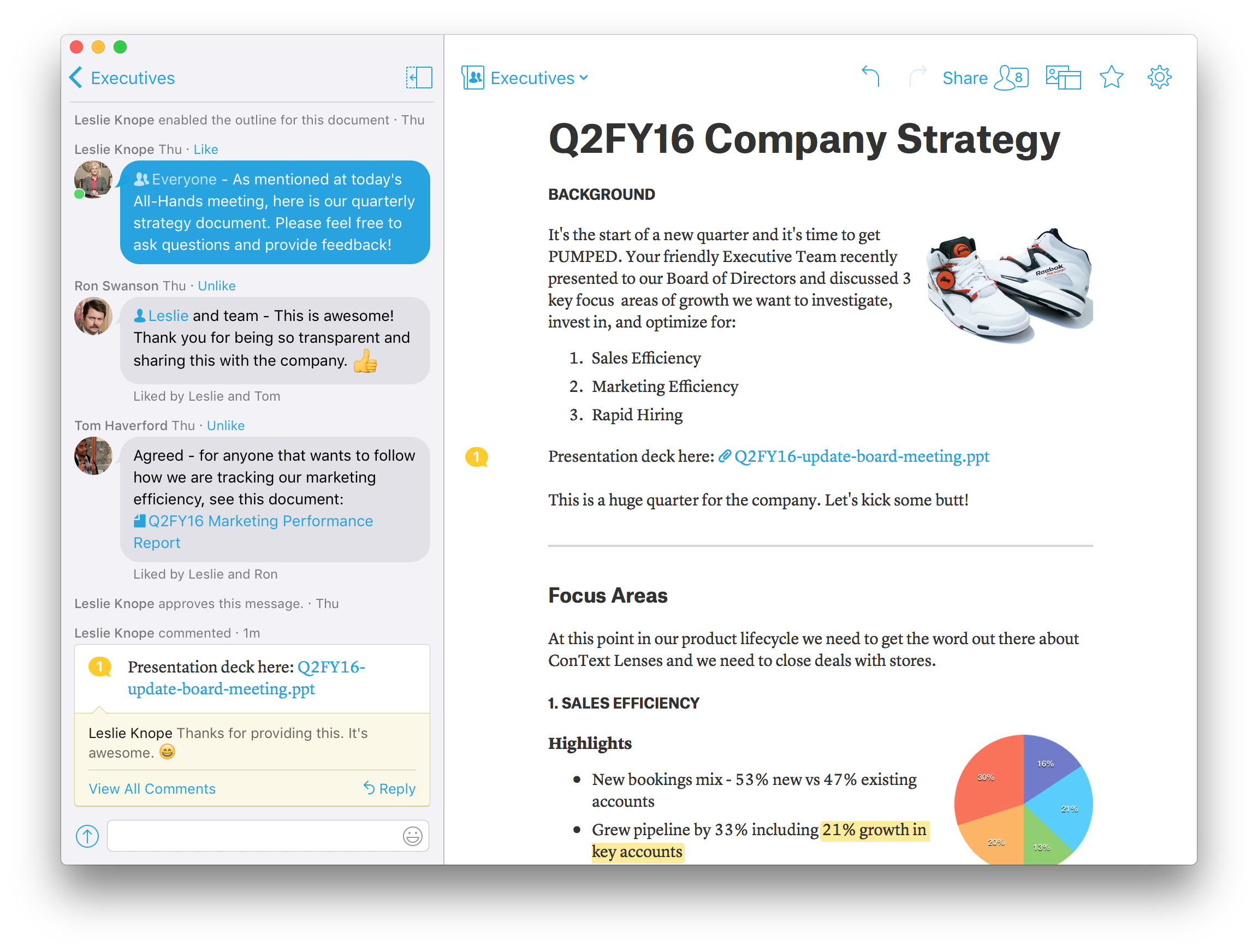
Quip is a mobile word-processing app created by Facebook’s former chief technology officer, Bret Taylor. Quip infuses a messaging element into the app to make collaboration a breeze. You can use the app to create documents, spreadsheets, and presentations. You can also use the app to collaborate on blog posts, manage projects, or even share a grocery list. Photo source: https://www.g2crowd.com/products/quip/details
According to thenextweb.com, if you find yourself bombarded with cute videos all day, Pocket might help you save those for later. If you frequently come across things you’d like to read “at some time” then Pocket can, again, help you out. With the requisite bookmarks, apps and extensions, it’s easy for you to save stuff to check out whenever you like.
The service lets you bookmark anything on the Web; articles are stored in your personal library, where they can be easily located and read when it’s most convenient. It doesn’t matter if you have a connection either, as Pocket can download (almost) everything to your device automatically.
Google Keep is a bit like Google’s version of Evernote, and it’s now available on both iOS and Android. You can use the app to take notes, make to-do lists, set reminders, and record audio. And one of its main qualities is the ability to organize your notes with colored labels.
Moreover, it’s stored online, so if you lose your phone or computer, your information is safe. It’s also accessible anywhere with Internet access. It’s intentionally made to be a very simple platform with few options. Therefore, you cannot format your text in any way.
Wunderlist is an easy-to-use to-do list app. It lets you set due dates and reminders and share lists or have conversations about them. Wunderlist can help you organize your grocery list, remember movies you want to see, or collaborate to help plan a vacation.
Besides keeping you organized, Fantastical 2’s best feature lets you enter simple phrases, which it will then translate into a calendar appointment automatically. Even better, the DayTicker and the event list are connected. Swipe the list and the DayTicker will update automatically. Fantastical lets you see your events and reminders like never before.

Letterspace is a note-taking app that uses hashtags to organize your thoughts. It also has a handy swipe bar that lets you move your on-screen cursor without moving your hands from the keyboard, which makes editing your notes much easier. Letterspace doesn’t distract you. It provides a noise free space to jot things down. To create a To Do List start a new line with a dash and a pair of squared brackets. On iPhone & iPad, Letterspace smart symbol suggestion also presents these characters when you start a new line. To mark it as completed just tap on it like a checkbox. Use #hashtag and @mentions anywhere in your notes. Letterspace automatically indexes and groups them together. In case you forgot to tag, we also have Full-Text search that support Asian languages right from the start.
The Internet is filled with interesting, crazy and new information (and sometimes so much we cannot handle it all). Driven by curiosity and personal development, you can spend a lot of time at work reading trivial articles. If you want to fix this, Instapaper is worth looking at. With one click, you can save it to be read later. It also suggests topics and articles through what you have saved already. Instapaper syncs the articles and videos you save so that they’re waiting for you on all your devices – iPhone, iPad, Android, or Kindle. You can read anything you save, anywhere and anytime you want, even offline.
- Time Tracker
This extension does what it says as well: it tracks your time. What’s great about this one is that it logs every different website you go to. You can check it out in detail to see where you spend your time. You will be surprised sometimes how much a certain website sucks your time and adjust.
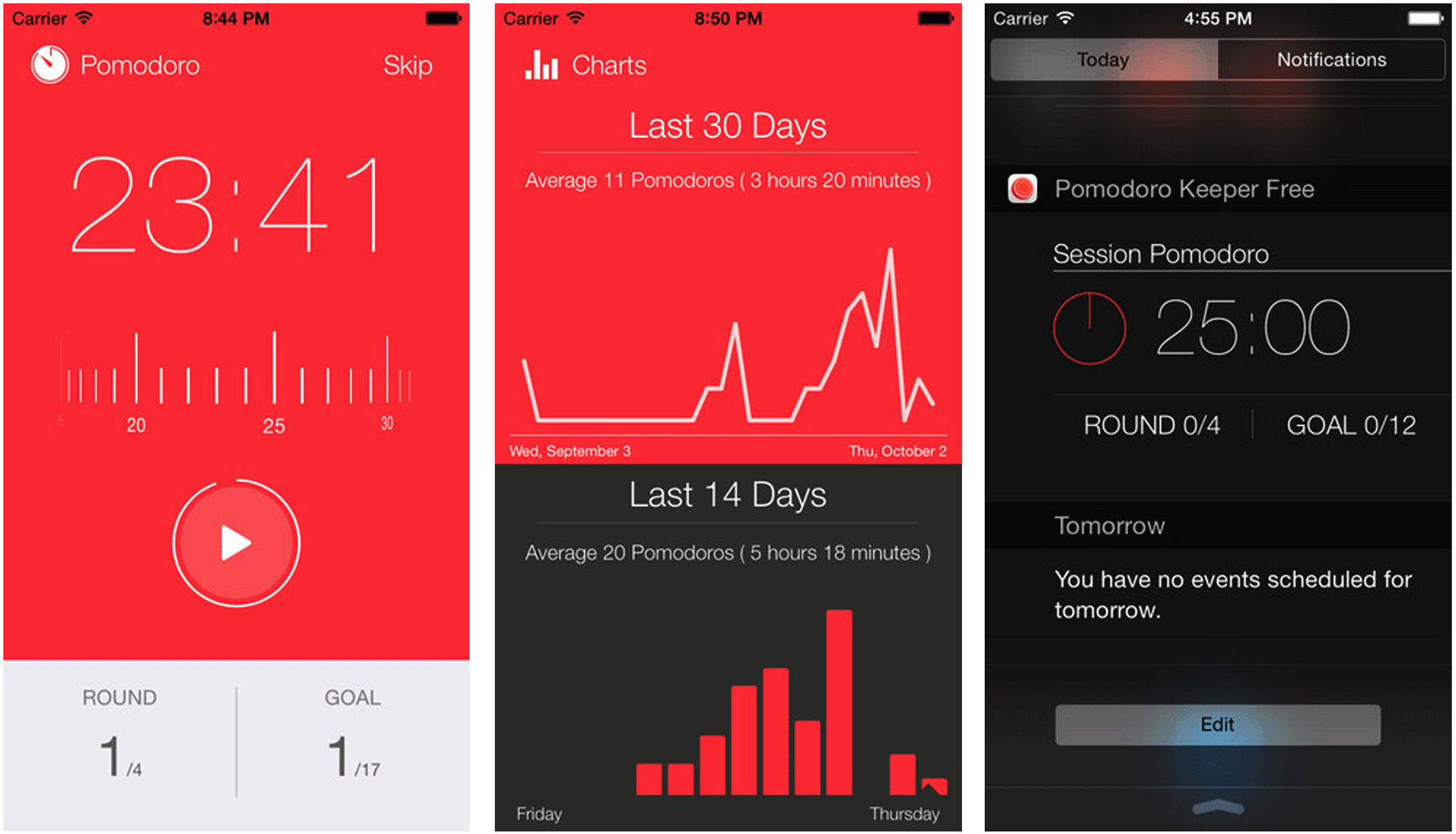
One of the most well-known productivity techniques is the Pomodoro Technique. Basically, you focus on just one task for 25 minutes and then take a forced 5-minute break. This extension is just like the Forest App but there is no animated tree involved (just a timer). Photo source: https://zapier.com/blog/best-pomodoro-apps/
Have you ever wondered if you are being less productive than you could be because you don’t know much about the science of sleep or sleep cycles? If not, it’s true. This site solves this problem for you by letting you know when you should sleep and wake up based on your personalized sleep cycles. If you don’t like this one, there are plenty of other tools and apps that do similar tasks. Sleep is a crucial, but often overlooked part of everyone’s life. Having the right amount can literally double your productivity.


